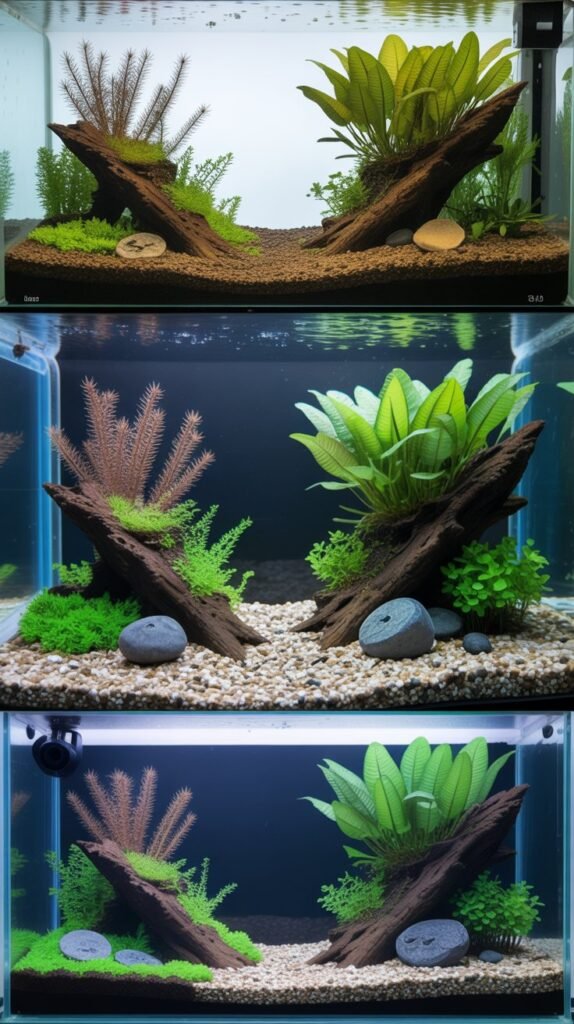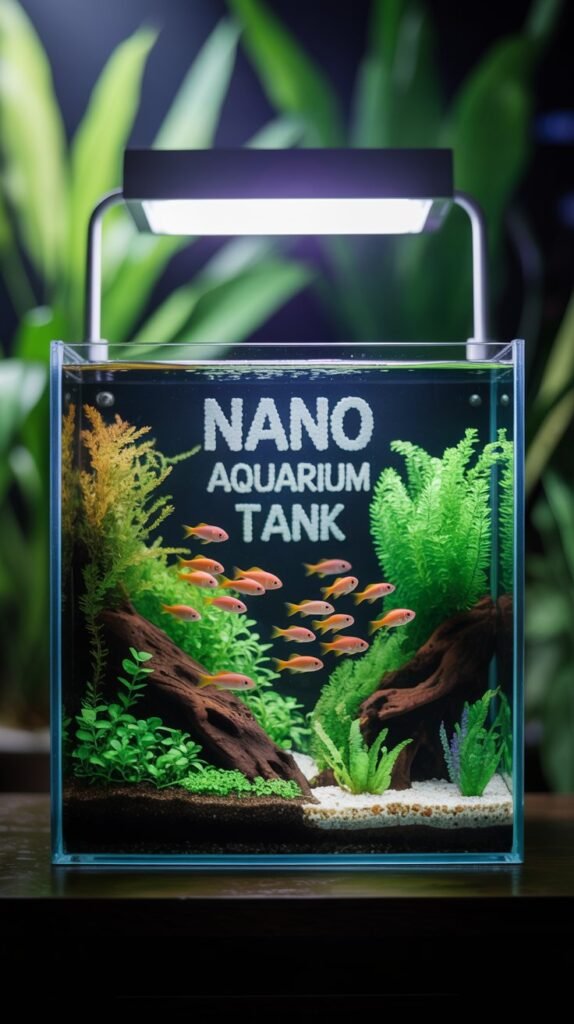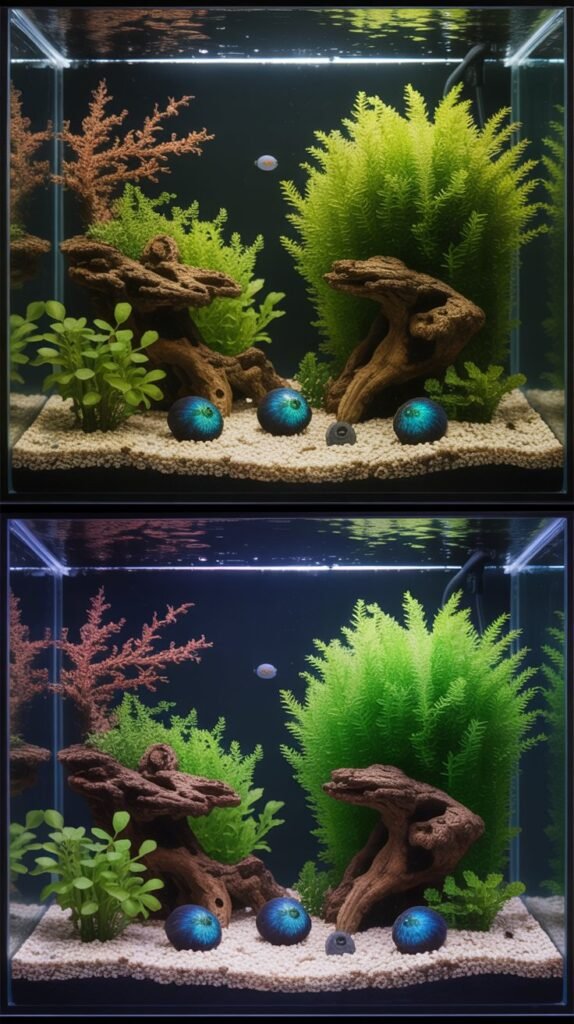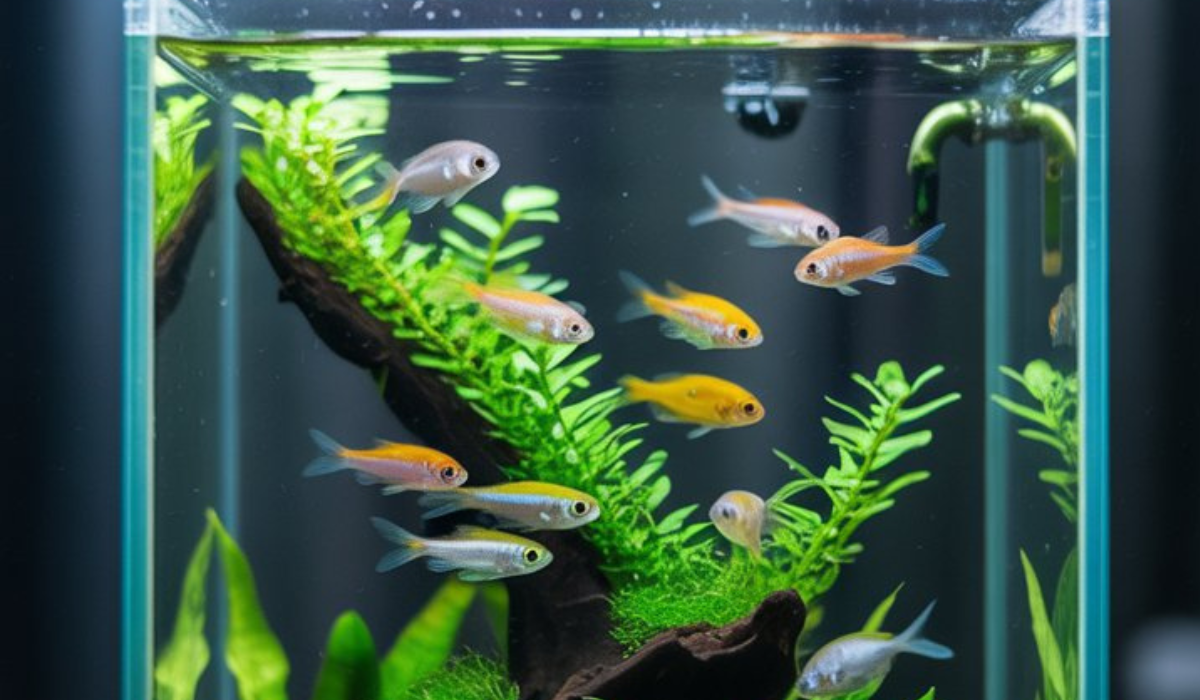Keeping fish is one of the most calming and rewarding hobbies in the world. But what if you don’t have enough space for a large fish tank? Enter the Nano Aquarium Tank — a compact, stylish, and efficient way to enjoy the beauty of aquatic life without needing an entire wall for your setup. Whether you’re a beginner or an experienced aquarist, a nano tank offers countless possibilities for creativity, design, and relaxation.
In this comprehensive guide, we’ll explore everything you need to know about nano aquariums, from setup and equipment to fish selection, maintenance, and pro-level aquascaping ideas.
What Is a Nano Aquarium Tank?
A nano aquarium tank is a small-sized aquarium, usually ranging between 2 to 20 gallons (around 8 to 75 liters) in capacity. The term “nano” refers to its compact size, making it ideal for desks, countertops, or small apartments. Despite their size, these tanks can host vibrant underwater ecosystems — from colorful shrimp colonies to small schooling fish and lush aquatic plants.
Nano aquariums are perfect for hobbyists who love detail-oriented setups. With proper care, they can be just as stable and visually stunning as larger tanks.
Benefits of a Nano Aquarium Tank

Owning a nano tank has numerous advantages beyond just saving space. Here are some key benefits:
1. Space-Saving Design
Nano aquariums fit easily into any home or office environment. You can place them on a desk, shelf, or bedside table — ideal for those with limited room.
2. Budget-Friendly
A smaller tank means less investment in water, filtration systems, lighting, and decorations. This makes it a great choice for beginners or those testing the waters before committing to a larger setup.
3. Easy to Maintain
With less water and fewer fish, cleaning and water changes take less time and effort. It’s a perfect low-maintenance hobby for busy individuals.
4. Aesthetic Appeal
Nano tanks are often used as design pieces. They can serve as a beautiful living decoration, adding tranquility and nature to any room.
5. Perfect for Aquascaping
Because of their small size, nano aquariums encourage creativity. Many aquascapers love designing detailed miniature landscapes — complete with driftwood, rocks, and carpet plants.
Choosing the Right Nano Aquarium Tank
When selecting a nano aquarium tank, consider the following factors:
1. Tank Size
Nano tanks come in various sizes — 3, 5, 10, and 20 gallons are the most common. For beginners, a 10-gallon tank offers a perfect balance between manageability and water stability.
2. Material
You can choose between glass and acrylic tanks:
- Glass Tanks: Scratch-resistant, clear, and affordable.
- Acrylic Tanks: Lightweight, stronger, and easier to shape into unique designs.
3. Shape
From cubes to rectangles to bow-front designs, the shape of your tank influences both aesthetics and ease of cleaning. Cube nano tanks are particularly popular for aquascaping.
4. Built-in Filtration and Lighting
Some modern nano tanks come with integrated filters and LED lighting systems, which makes them more convenient for beginners.
Essential Equipment for Nano Aquariums

Even small tanks require proper equipment to maintain water quality and support aquatic life. Here’s what you’ll need:
1. Filter
A good nano filter removes waste and toxins while circulating water. Sponge filters, hang-on-back filters, and internal filters are all excellent choices depending on your setup.
2. Heater
If you plan to keep tropical fish, a small adjustable heater is necessary to maintain stable temperatures (around 75–80°F or 24–27°C).
3. Lighting
LED lighting not only enhances the tank’s beauty but also supports plant growth. Opt for full-spectrum LED lights that promote natural coloration and photosynthesis.
4. Substrate
Choose a substrate suitable for your tank’s purpose:
- Gravel: Great for decorative tanks.
- Plant Substrate: Provides nutrients for rooted plants.
- Sand: Ideal for shrimp or bottom dwellers.
5. CO₂ System (Optional)
For heavily planted aquascapes, a nano CO₂ system helps plants grow lush and healthy. However, it’s optional for beginner setups.
Setting Up Your Nano Aquarium Tank: Step-by-Step
Let’s walk through the process of setting up your own nano aquarium successfully:
Step 1: Plan Your Setup
Decide whether you want a planted tank, shrimp tank, or small fish community. Your livestock choice will determine your equipment and layout.
Step 2: Clean the Tank
Rinse the tank with warm water (no soap!) to remove any dust or residue before setup.
Step 3: Add the Substrate
Add 1–2 inches of your chosen substrate. Slope it slightly toward the back for depth and aesthetic appeal.
Step 4: Place Hardscape
Add rocks, driftwood, and decorations before filling water. This prevents disturbing the layout later.
Step 5: Fill the Tank
Slowly pour dechlorinated water or use a plate to prevent disturbing the substrate.
Step 6: Install Equipment
Add the filter, heater, and lighting system. Check everything is working properly.
Step 7: Cycle the Tank
Before adding fish, perform a nitrogen cycle (usually 3–4 weeks) to build beneficial bacteria that convert harmful ammonia into harmless nitrate.
Step 8: Add Plants and Fish
Once the water parameters are stable, introduce plants and livestock gradually.
Best Fish for Nano Aquariums

Because of the limited space, choosing the right fish species is essential. Here are some of the best nano aquarium fish:
1. Betta Fish
Beautiful and easy to care for, Betta fish are perfect for solo tanks. Avoid housing them with fin-nipping species.
2. Neon Tetras
Peaceful schooling fish that bring color and movement to your nano tank.
3. Guppies
Hardy and colorful, guppies thrive in small groups and are excellent for beginners.
4. Chili Rasboras
Tiny yet vibrant, these fish love planted nano tanks with gentle filtration.
5. Endler’s Livebearers
Small, active, and eye-catching, perfect for a lively nano setup.
6. Dwarf Corydoras
Bottom dwellers that help clean up leftover food while adding personality.
7. Shrimp and Snails
Amanos, Cherry Shrimp, and Nerite Snails are excellent cleaners and add variety to your mini ecosystem.
Best Plants for Nano Aquascaping
Aquatic plants bring life and oxygen to your nano aquarium. Here are some of the most popular and easy-to-grow species:
- Java Moss – Excellent for shrimp tanks and creating natural-looking scapes.
- Anubias Nana Petite – Hardy and perfect for attaching to driftwood or rocks.
- Dwarf Hairgrass – Great for carpeting small tanks.
- Cryptocoryne Parva – A low-growing plant that adds depth.
- Monte Carlo – Forms lush green carpets with moderate light.
- Java Fern – Tolerates a wide range of conditions.
With good lighting and balanced fertilization, your nano aquascape can become a miniature underwater jungle.
Nano Aquarium Aquascaping Ideas
Aquascaping is the art of designing beautiful aquatic landscapes. In a nano aquarium, creativity and precision matter. Here are some popular styles:
1. Iwagumi Style
Uses a minimalistic layout of stones and short carpeting plants. Simplicity and balance are key.
2. Nature Style
Inspired by natural scenery like forests or rivers, using driftwood and varied plant textures.
3. Dutch Style
Focuses on colorful plant arrangements and layering — perfect for plant lovers.
4. Shrimp Habitat
Designed specifically for shrimp breeding with mosses, caves, and fine substrate.
5. Betta Showcase
A single Betta with plants and driftwood creates a serene and elegant display.
Maintenance Tips for Nano Aquariums
Keeping a nano tank healthy requires consistent but simple care. Here’s what to do:
- Perform Weekly Water Changes – Replace 20–30% of water to prevent toxin buildup.
- Clean the Glass – Use a soft algae scraper weekly.
- Vacuum the Substrate – Remove debris using a mini siphon.
- Trim Plants – Regularly prune overgrown plants for better light and flow.
- Check Water Parameters – Monitor ammonia, nitrite, nitrate, and pH levels.
- Feed Sparingly – Overfeeding can quickly foul the water in small tanks.
A consistent routine keeps your ecosystem balanced and visually stunning.
Common Problems in Nano Aquariums
Even though nano tanks are small, they can be sensitive to sudden changes. Here are common issues and their fixes:
- Algae Growth: Caused by excess light or nutrients. Reduce feeding and adjust light hours.
- Cloudy Water: Usually due to bacterial bloom; let the tank settle or check filtration.
- Ammonia Spikes: Avoid overstocking and perform regular water changes.
- Fish Stress: Maintain stable temperatures and avoid sudden movements or noise near the tank.
Best Nano Aquarium Kits for Beginners
Several manufacturers offer ready-to-use nano tank kits that include filters, lights, and accessories. Some popular models are:
- Fluval Spec V (5 Gallon) – Sleek design with strong LED and filtration.
- Marina LED Aquarium Kit – Affordable and beginner-friendly.
- Aqueon MiniBow 5 – Compact and stylish with curved front glass.
- Dennerle Nano Cube – Great for planted aquascapes.
- Tetra Crescent Aquarium Kit – Simple setup with built-in LED lights.
Nano Aquarium Safety Tips
- Always use dechlorinated water before adding fish.
- Keep the tank away from direct sunlight to prevent overheating and algae.
- Use a tank lid to prevent fish or shrimp from jumping out.
- Never add all fish at once — introduce them gradually.
- Unplug all equipment before water changes for safety.
Conclusion
A nano aquarium tank proves that you don’t need a huge space to enjoy the wonder of aquatic life. With the right setup, even a 5-gallon tank can become a thriving underwater world full of beauty, balance, and serenity. Whether it’s a minimalist Betta setup or a lush planted shrimp paradise, a nano tank gives you the power to express your creativity while staying compact and efficient.
Small in size, but massive in joy — that’s the magic of a nano aquarium.
Frequently Asked Questions (FAQs)
1. What size qualifies as a nano aquarium?
A nano aquarium typically holds between 2 and 20 gallons of water, though some aquarists consider anything under 30 gallons as nano-sized.
2. Are nano aquariums good for beginners?
Yes! Nano tanks are easy to set up and maintain, especially if you start with hardy fish and simple plants.
3. How often should I clean my nano tank?
Perform a 20–30% water change once a week and clean the glass or decorations as needed.
4. Can I keep shrimp in a nano aquarium?
Absolutely! Shrimp thrive in small tanks, especially species like Cherry Shrimp and Amano Shrimp.
5. Do nano tanks need filters?
Yes. Even small tanks require filtration to maintain water quality and remove toxins.
6. What’s the best fish for a 5-gallon nano tank?
A Betta fish, a small group of Endlers, or shrimp and snails are great options for 5-gallon setups.
7. Can I grow live plants in a nano aquarium?
Definitely. Many plants like Java Fern, Anubias, and Dwarf Hairgrass grow beautifully in nano setups.
8. How do I prevent algae in a nano tank?
Limit lighting to 6–8 hours daily, avoid overfeeding, and perform regular water changes.
9. How many fish can I keep in a 10-gallon nano tank?
A general rule is 1 inch of fish per gallon, but always consider each species’ space and social needs.
10. Are nano aquariums suitable for saltwater setups?
Yes, you can create nano reef tanks, but they require more experience and careful water monitoring.

